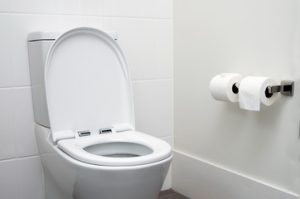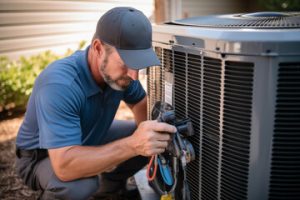Scientific research has shown that bones have a maximum threshold for bone density growth. Once bones reach that threshold, a natural adaptive response is activated. Contact OsteoStrong East Boca now!
OsteoStrong delivers results with brief (12 min) once-a-week sessions that use a suite of patented equipment known as Spectrum System that delivers axial load to stimulate bone growth and improve balance. Result: measurable increases in bone density, reduced pain and improved balance.

The majority of osteoporosis cases result from loss of bone density, a condition that leads to increased risk of fractures and decreased quality of life. However, osteoporosis is not inevitable as most people can reduce their risk through diet and exercise.
The OsteoStrong program triggers the body’s natural adaptive response to increase bone density and strengthen muscles and bones. Combined with our cutting-edge modalities, it is scientifically backed and research driven to ensure maximum results with minimum effort.
Unlike many traditional exercise programs that target specific areas of the body, OsteoStrong uses a robotic platform designed to deliver axial compression. This emulates the force of impact, which is critical to triggering osteogenic load (bone density growth). The platform also offers a variety of other benefits such as improving balance and strength.
It is critical to build and maintain bone health throughout the lifespan. A strong skeleton is crucial to preventing falls and fractures, which can have serious health and financial consequences. Sadly, many people don’t prioritize bone and muscle health because they are under the impression that it is only a concern for elderly people.
However, sedentary lifestyles linked to electronic device usage, reduced sun exposure which reduces Vitamin D levels, and increased food allergies and gut health problems are all leading to more bone health issues for younger adults. This has led to a need for more preventative healthcare options like OsteoStrong which are able to offer significant improvements in bone health and balance, while improving overall strength and performance.
The average person feels a significant increase in their bone and skeletal strength after just four sessions. This increases as they continue regular sessions and most will have their DXA scans analyzed after 6-12 months to confirm osteogenic gains. Most clients notice balance improvements after the first session as well and these improve for several weeks after each visit.
OsteoStrong has been shown to have a positive impact on balance, strength, flexibility and posture. It has also been shown to increase bone density, reduce back pain and alleviate joint and back discomfort.
Better Balance
The unique circuit at OsteoStrong engages your entire central nervous system and musculoskeletal system in just ten minutes once per week. Each device places you in a neutral, natural position that exerts multiples of your body weight and emulates impact to activate muscles, bones, ligaments and tendons. The result is the body’s natural adaptive response to build bone density, improve balance and agility, and thicken tendons and ligaments to prevent joint deterioration. This combination also results in an immediate and sustained improvement in balance and posture – one of the first things that many members notice.
It’s well established that bone and muscle strength is key to a healthy lifestyle, slowing the aging process. It’s also been shown that the more muscular you are, the lower your risk for chronic diseases like heart disease and diabetes. Muscle mass also helps prevent sarcopenia and dynapenia, the natural loss of muscle mass that occurs in mid-life.
At OsteoStrong, a membership-based integrative health and wellness center in Prairie Village, you improve your balance, posture, strength and balance in just 15 minutes a week with no pain or sweating. The sessions are guided by certified personal trainers and supervised by medical professionals. You work with four machines (picture typical weight machines without the plate stacks) that use a combination of vibration, Osteogenic Loading and core strengthening to improve balance and posture, increase muscle strength, strengthen the spine and enhance bone density.
In addition, the patented technology used in these machines has been shown to stimulate your innate neuromuscular adaptive response that promotes bone and muscle growth in accordance with Wolff’s Law. The X3 Bar and OsteoStrong are engineered to allow you to safely load your bones with significantly higher loads than normal weight training or other exercise programs, maximizing muscle and bone density gains.
Brian, who is in his 50s and a member of OsteoStrong, says he’s able to keep playing soccer and feels better overall since starting his sessions. He also notices improved balance when working out and playing with his kids. Five to ten years from now, he hopes to still be playing soccer and he believes the trigger growth machines at OsteoStrong will help him stay strong.
Stronger Muscles
Weak muscles and bones make you more susceptible to falls and injuries. OsteoStrong helps prevent and reverse this. Studies show that osteogenic loading (OsteoStrong’s method of mimicking high impact forces to stimulate bone growth) also increases muscular strength and balance.
OsteoStrong targets the type II fast-twitch muscle fibers, which are responsible for quick reflexes and agility. These muscle fibres are often neglected as part of an exercise routine, but they play a major role in preventing falls and maintaining balance. During an OsteoStrong session, you engage your entire musculoskeletal system in a short and simple way – making it easy to incorporate into your weekly routine.
Unlike most workouts, which take hours to complete and require substantial physical energy, OsteoStrong sessions are short and sweat-free. In fact, a single OsteoStrong session lasts just 60 seconds. You can do it at your own pace and without the need for a gym membership.
What’s more, because OsteoStrong’s approach is so simple, it is safe for people of all ages and fitness levels. It’s even suitable for those with pre-existing injuries.
In just a few short sessions at our wellness center, you can improve your bone health, posture, balance and athletic performance. And with a weekly appointment that takes less than 15 minutes, it’s easy to fit into your schedule.
Pain-Free Joints and Back
OsteoStrong is a unique wellness center that improves bone density, balance, strength and posture. Our members experience increased flexibility and a decrease in joint pain, with improvements showing up as early as after just one session!
OsteoStrong sessions last about 15 minutes once per week. During each session, our members perform a circuit of four devices designed to place optimal pressure on bones. These machines emulate the impact of exercise without the risk of injury, a process called osteogenic loading. This allows us to achieve a level of force exerted through bone that is far higher than that seen in daily activities, weight training, or even jogging. This heavy loading is important because it triggers the growth of new bone tissue, called osteogenesis, which helps to prevent fractures and reduce the risk of osteoporosis.
The device circuit also provides instant biofeedback with a member’s impact emulation force exertion which is measured in multiples of body weight, allowing us to track the results of each session. This information is shared with our members after each session.
All pain & discomfort, no matter what the diagnosis is – whether it be Osteoarthritis (wear & tear) or Rheumatoid Arthritis (an auto-immune disease in which your own body attacks your joints), all ultimately stem from the same source – Inflammation. The goal of all health care providers is to decrease inflammation and help you get back to feeling healthy, pain free.
Regardless of your age or fitness level, it is never too late to make your health and wellness a priority. We believe that everyone should have access to a safe, effective and affordable solution for improving their bone health and achieving their health goals. That’s why we created OsteoStrong!
*No physical activity is 100% safe. Statements have not been evaluated by the FDA and are not intended to diagnose, treat, cure or prevent any disease or health condition.




